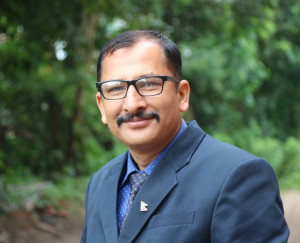Culture & Lifestyle
2076 years since its inception, who started Vikram Samvat is still a mystery
Many believe the name ‘Vikram’ is associated with the calendar, and a king by the same name started it. But which one is up for debate.
Abhaya Raj Joshi and Shashwat Pant
At the Bajrayogini Temple in Sankhu, around 42 kilometres east of Kathmandu, a kadhai big enough to cook for a dozen people is placed upside down. Next to it is the statue of a ‘head’, believed to be that of Vikram Sen, a warrior from Ujjaini (present day Ujjain in India).
According to various vanshavali (genealogies) published in the journal Ancient Nepal, under the Department of Archaeology, warrior Vikram Sen had come to Sankhu as a young man and served the then king. His tales are part of many legends, many associated with the origin of the Hindu calendar Vikram Samvat, or Bikram Samvat in Nepal, which started its New Year on Monday. The calendar steps into its 2077th year, yet no one knows whether it was Vikram Sen who started it for certain. Till date, the calander’s origin remains shrouded in mystery.
The warrior’s tale that is linked with the start of the Hindu calendar is one in which he worked for King Dharmadev. The legend goes—which has much written evidence, according to historian Dinesh Raj Panta—Dharmadev was a philanthropic king, who used to donate money and jewels to the poor. Legend says that the king received the jewels from Vajrayogini, the goddess in Sankhu. But they came at a price. Every night, he would go to Bajrayogini temple, cut a part of himself into pieces and cook his own meat in the kadhai to feed the goddess. The goddess would in turn give him jewels.
One day when Sen saw what his king was doing for his people, he offered himself to the goddess. The goddess, happy with the offering, told the king she’d never need to be offered human meat again. The king was impressed by Sen’s devotion and offered him important court positions.
Soon he became king of Sankhu and ruled for years. He eventually returned home to rule there as Vikramaditya, achieving so much greatness and fame to start a new era, the Vikram Era. There are, however, no tales about how his head ended up at the Bajrayogini Temple.
Many people believe that as the name ‘Vikram’ is associated with the calendar, a certain king by the name Vikramaditya may have started it. But which one is up for debate. Vikram Sen wasn’t the only Vikram to have lived in that time. “There are far too many Vikramadityas in history and it’s difficult to pinpoint the one who may have started the calendar,” said Panta.
According to the Indian version of the story, Vikramaditya was born and raised in Ujjain where he became king. He is believed to have lived in a time period that does not correspond to the Vikram Era. Similarly, the Maurya king Chandragupta II (375-415 AD) was also known as Vikramaditya.
But historian and politician Dirgha Raj Prasain believes the Vikramaditya from Sankhu was the original Vikramaditya after whom the calendar year was started. Prasain, almost every year, writes newspaper columns on the Vikram Samvat New Year saying that Vikramaditya was indeed related to Nepal. There are other accounts that say that Vikramaditya was a Lichhavi king who ruled over Kathmandu valley.
There are also those, such as historian Ramesh Dhungel, who say the Vikrama Era has nothing to do with King Vikramaditya.“If you go by dates, the two Vikramadityas (both from Ujjain and Chandragupta II) were born long after the era started,” says Dhungel. If one is to take into account the current difference between the Vikram Era and the Gregorian Calendar, the Vikram Era should have started around 57BC.
“There is no proof any other Vikramaditya existed 2076 years ago,” he says.
Dhungel believes the era started after people noticed changes happening during Spring, as during the current month of Baisakh, things began to change—flowers and trees started to blossom, birds started to sing and, with winter over, everything started to change.
“People noticed those changes, which is why they started the calendar: to mark the change,” says Dhungel. He also says the reason why people associate the era with the Indian kings is because Nepal imports a lot of things, including knowledge, from India.
“It started in the sub-continent but where exactly no one knows. A lot of our ancestors got their education from India and that is why there is a belief the era was started from there,” he says. “Even in Thailand their New Year is the same as the Vikram Era. The same is the case in Japan but they don’t use it officially.”
Panta says the name Bikram Samvat might have come later, as he believes it was called Kirta Samvat until the era reached its 10th century. “These eras are defined by civilisations and communities rather than a single individual. So saying a certain king started it over 2,000 years ago is naive,” says Panta.




 9.12°C Kathmandu
9.12°C Kathmandu




.jpg&w=200&height=120)










